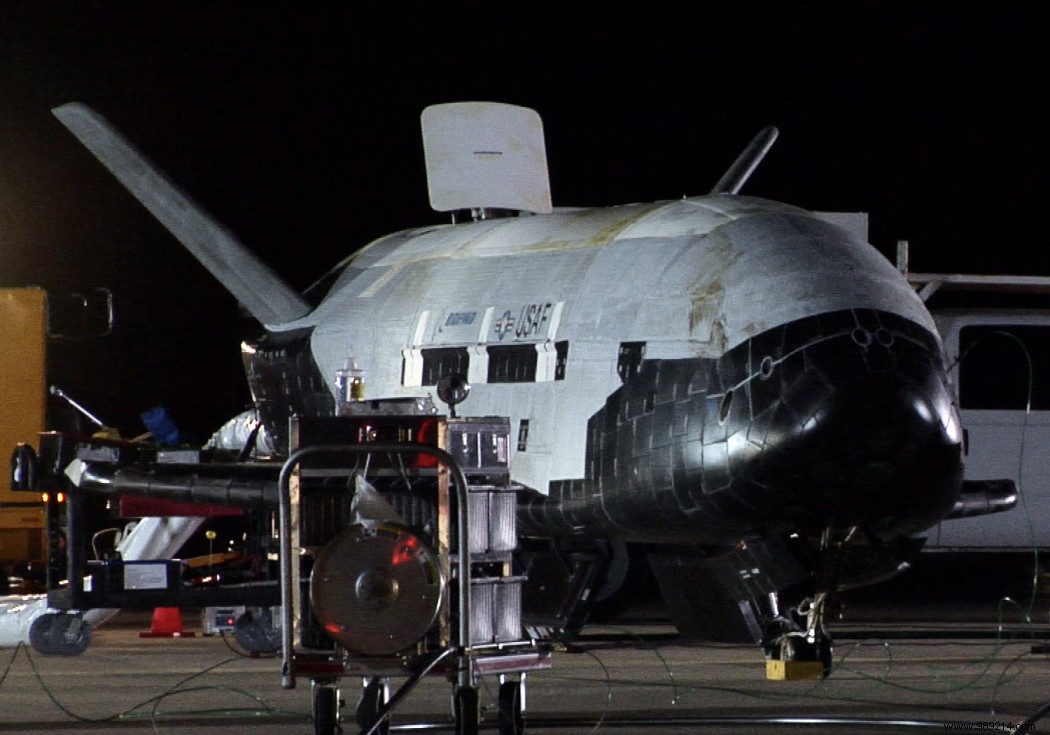The Air Force's X-37B spaceplane just spent another 500 days in Earth orbit conducting experiments. Some objectives have been communicated, others are still classified. At this time, it is unknown when and where OTV-6 will return to Earth.
In the vast arsenal of the Pentagon, you will find the X-37B, a top secret ship. The machine is not very large:about nine meters long, 4.6 meters wide and weighs around five tons. Physically, imagine an old American shuttle in a reduced model capable of flying at between 250 and 800 km in altitude .
In September 2017, the US Air Force's X-37B spaceplane was lifted into orbit by a SpaceX rocket. This mission, the fifth to his credit, was originally supposed to last 270 days. It was finally extended to 780 days before the spacecraft came to land in October 2019 on the Shuttle Landing Facility at NASA's Kennedy Space Center, smashing its record for time spent in space.
The exact nature of this mission had been largely classified, as with the first four. The US Air Force had nevertheless hinted that this project had been developed to explore reusable vehicle technologies supporting long-term U.S. space goals.
The X-37B program is also flown under the wing of a US Space Force unit called Delta 9. Its mission is to "prepare, present and project assigned and tethered forces for the purpose of conducting protective and defensive operations and providing national decision-making authorities with response options to deter and, if necessary, defeat orbital threats “, notes the fact sheet published by Schriever Air Force.

The American agency then followed up with a sixth flight. For this launch, the X-37B was capped atop a United Launch Alliance Atlas V rocket. Liftoff took place on May 17, 2020 from Cape Canaveral, Florida. This enigmatic military space drone, also dubbed USSF-7 by the US Space Force, has now spent more than 500 days around the Earth. The total duration of this mission is still unknown.
This sixth mission is the first to use a service module to host experiments. You will find it at the back of the vehicle. While the main program is still classified as defense, some of its onboard experiences were still identified before launch.
One of them, named PRAM, comes from the US Naval Research Laboratory (NRL). This is an investigation into the transformation of solar energy into radio frequency microwave energy. The X-37B also deployed the FalconSat-8, a small satellite developed by the US Air Force Academy to conduct several experiments in orbit.
Finally, two NASA experiments are also on board the space plane to study the effects of the space environment on a plate of samples of materials and seeds used to grow food.